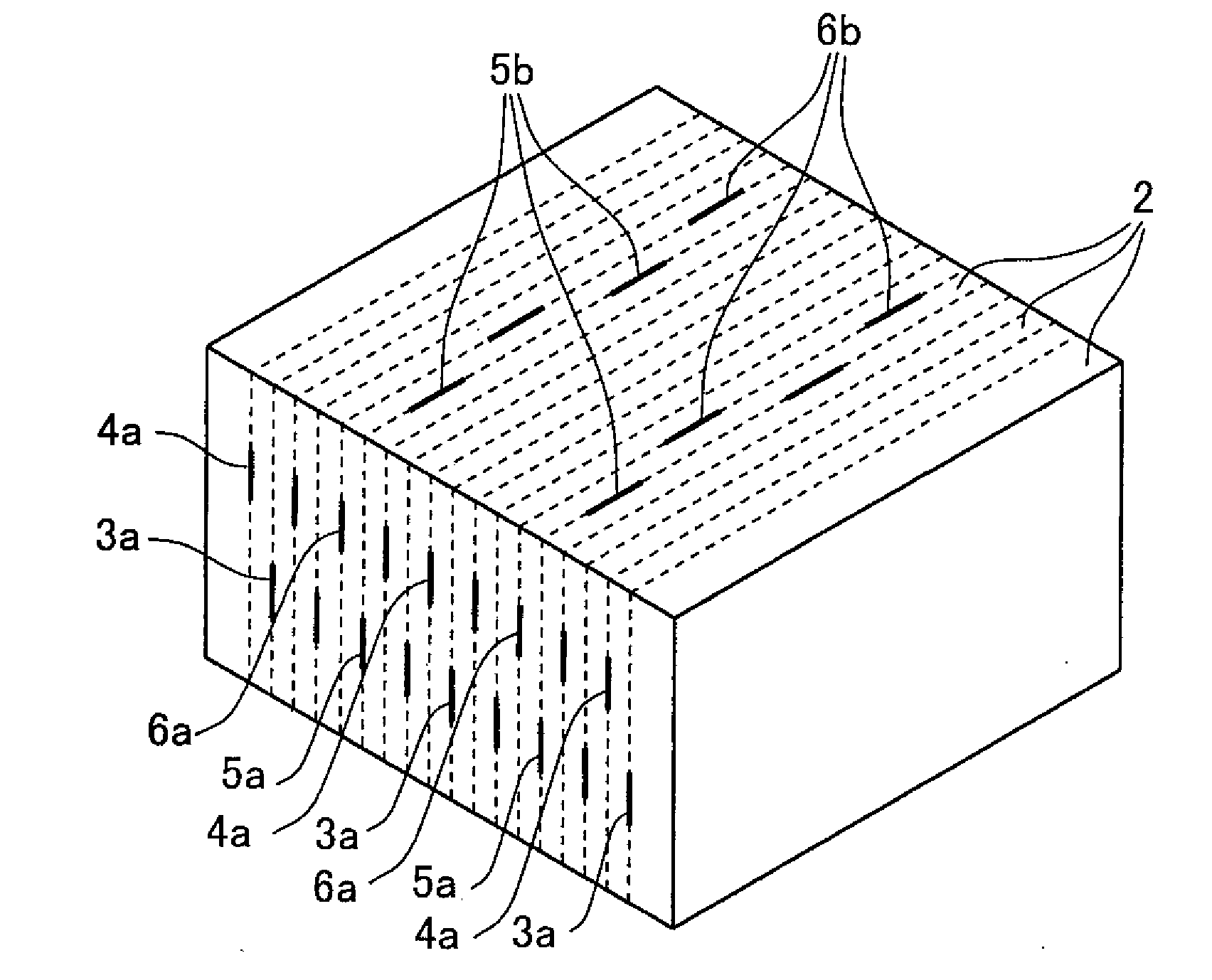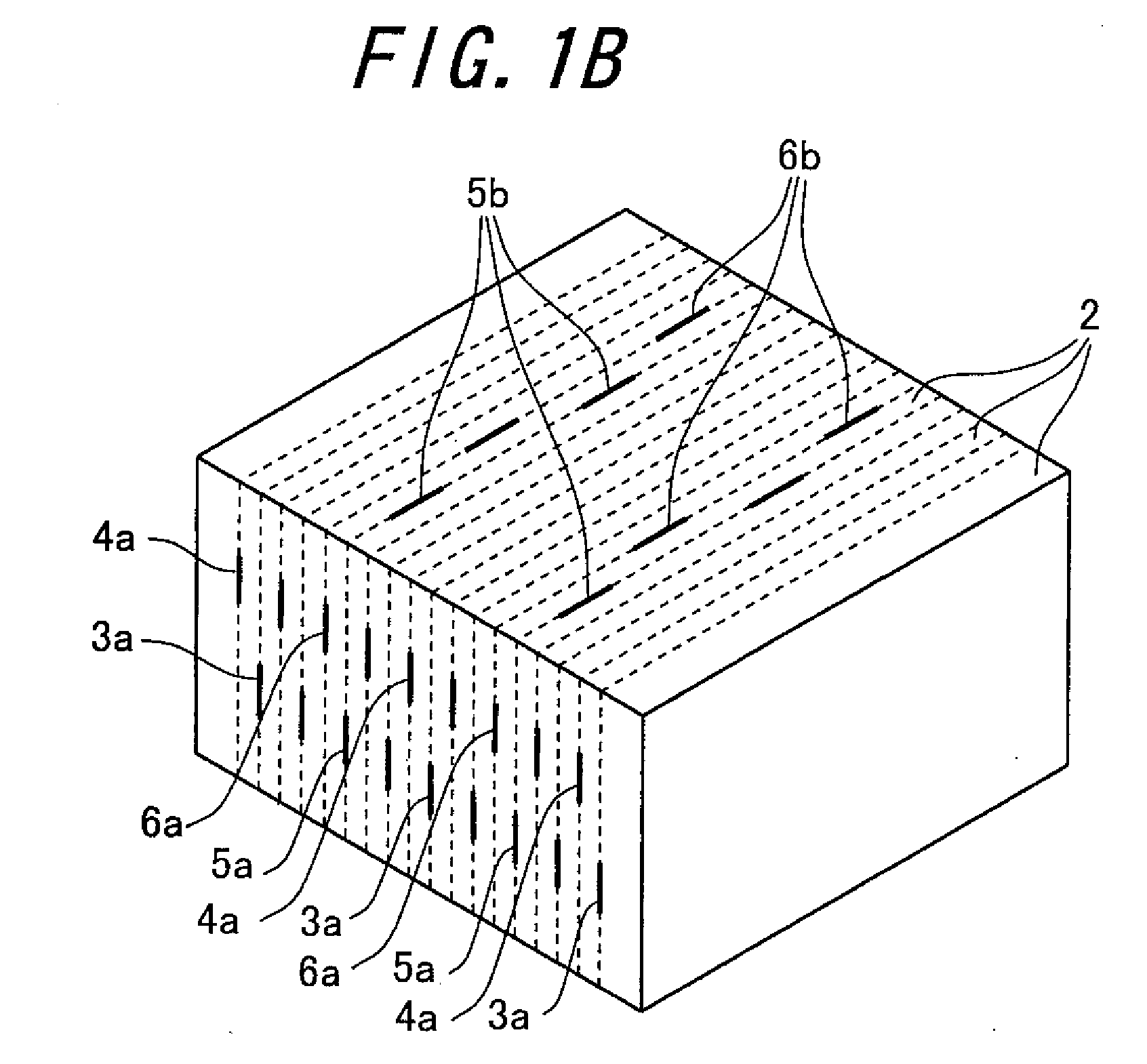Multilayer Capacitor
a multi-layer capacitor and capacitor technology, applied in the field of multi-layer capacitors, can solve the problems of increasing the esl level, the inability of the decoupling circuit to divert an alternating current component of the power source current, and the inability to reduce the circuitry size of the decoupling circuit, so as to reduce the amount of increase, increase the resistive component, and increase the esr
- Summary
- Abstract
- Description
- Claims
- Application Information
AI Technical Summary
Benefits of technology
Problems solved by technology
Method used
Image
Examples
examples
[0065]A test sample 1 having the following structure was fabricated by way of the multilayer capacitor 10 according to the invention.
[0066]The multilayer body 1 is produced in the form of a dielectric block of rectangular parallelepiped shape constructed by stacking together rectangular dielectric layers 2, each of which is 0.8 mm long and 1.6 mm wide, in the stacking direction so that the dimension of the dielectric block in the stacking direction is 1.6 mm. The material used for the dielectric layer 2 is ferroelectric ceramics predominantly composed of barium titanate. The first internal capacitor electrode 3 and the second internal capacitor electrode 4, which are each formed by using a conductor material predominantly composed of nickel and 100 in number, are arranged in an alternating manner within the multilayer body 1. The first internal relay electrode 5 and the second internal relay electrode 6, which are each formed by using a conductor material predominantly composed of n...
PUM
 Login to View More
Login to View More Abstract
Description
Claims
Application Information
 Login to View More
Login to View More - R&D
- Intellectual Property
- Life Sciences
- Materials
- Tech Scout
- Unparalleled Data Quality
- Higher Quality Content
- 60% Fewer Hallucinations
Browse by: Latest US Patents, China's latest patents, Technical Efficacy Thesaurus, Application Domain, Technology Topic, Popular Technical Reports.
© 2025 PatSnap. All rights reserved.Legal|Privacy policy|Modern Slavery Act Transparency Statement|Sitemap|About US| Contact US: help@patsnap.com



